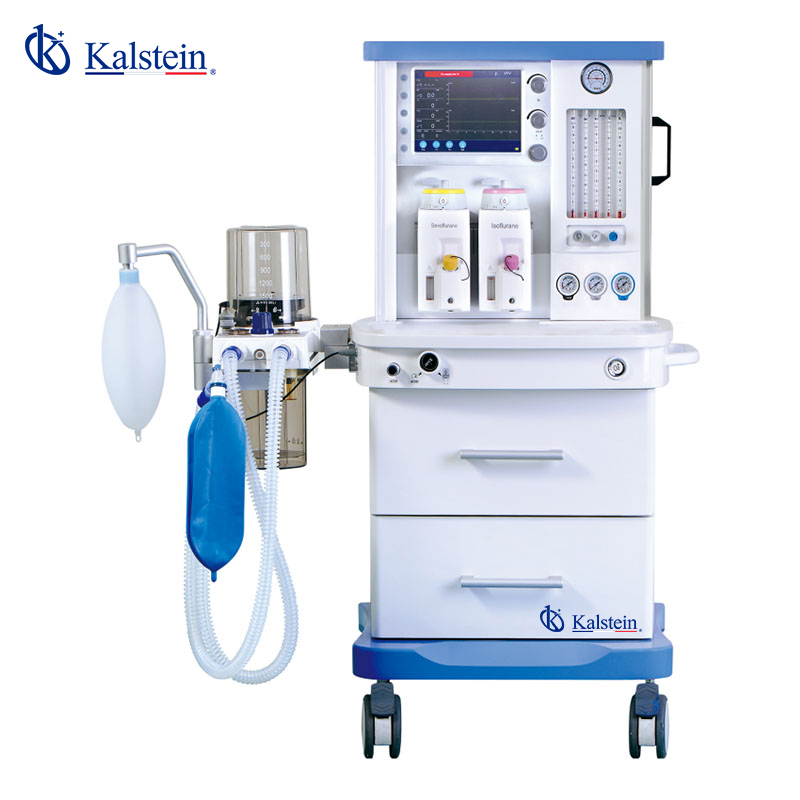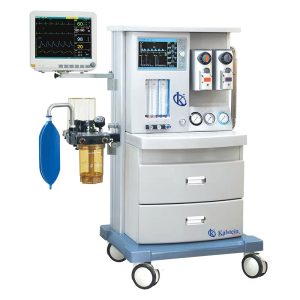Description
Anesthesia Machines YR02064-YR02068 deliver exceptional performance in various medical settings, including the Intensive Care Unit (ICU), Operating Room, and Anesthesiology Department. With advanced features such as dual vaporizers as standard and the ability to cater to adults, children, and pediatric patients, these anesthesia machines are versatile and reliable. Their comprehensive display options and diverse ventilation modes make them indispensable tools in modern medical care.
Market Price
The Anesthesia Machines YR02064-YR02068 are competitively priced within the market. On average, these devices are available within a range of $14,000 to $15,000 USD, depending on specific configurations and suppliers. For the most accurate pricing and to discuss potential discounts for bulk purchases, please request a quote through our Kalstein Plus platform.
Frequently Asked Questions
What type of patients can use these machines? The Anesthesia Machines YR02064-YR02068 are designed to be used with adult, child, and pediatric patients.
What display options are available? The machines offer a 10.4″ color display for certain models, while others come equipped with a 15″ color touch screen or a 15″ TFT LCD touch screen.
Advantages and Disadvantages
Advantages: These machines offer a comprehensive range of ventilation modes and oscillograms, ensuring adaptable and precise medical care. The inclusion of dual vaporizers standard enhances operational efficiency.
Disadvantages: While these machines are feature-rich, their advanced capabilities may entail a learning curve for users unfamiliar with high-tech medical devices.
Product Use in the Field
The Anesthesia Machines YR02064-YR02068 are primarily used in surgical and intensive care settings, where precise anesthesia delivery is crucial. Their ability to provide a variety of ventilation modes ensures that they can be tailored to suit the specific needs of each patient, enhancing treatment outcomes.
Recommendations
For optimal performance, regular maintenance and calibration of the Anesthesia Machines YR02064-YR02068 are recommended. Users should familiarize themselves with the comprehensive user manual provided and undergo training to maximize the machines’ capabilities. Consider enrolling in workshops or training sessions available through our platform to stay updated with new features.
Features
- Dual vaporizers standard.
- Compatible with adult, child, and pediatric patients.
- Multiple display options, including color and touch screens.
- Support for diverse ventilation modes.
Technical Specifications
| Model | YR02064 | YR02065 | YR02066 | YR02067 | YR02068 |
| Display screen | 10.4″ Color Display | 15″ Color Touch Screen | 15″ TFT LCD touch screen | ||
| Air sources | 3 (O2, N2O and AIR) | ||||
| Ventilation Modes | IPPV, A/C, SIMV | IPPV, A/C, PCV, SIMV, SIGH, MANUAL | VCV / PCV / PSV / AC / SIMV-V / SIMV-IP / PRVC / Manual / STAND-BY | IPPV, A/C, PCV, SIMV, SIGH, MANUAL | (V-CMV) IPPV, (P-CMV) PCV, PSV, (P-SIMV), (V-SIMV), SIGH, PRVC, MANUAL |
| Tidal Volume | 0, 20-1500mL | 0, 10-1500mL | 0, 20-1500mL | 0, 10-1500mL | |
| Oscillograms | Two: 1. P-T (pressure – time) 2. F-T(flow – time) |
Three: 1. P-T (pressure – time) 2. F-T(flow – time) 3. P-V loop (pressure – volume loop) |
Four: 1. P-T (pressure – time) 2. F-T(flow – time) 3. V-T(volume – time ) 4. P-V loop (pressure – volume loop) |
Five: 1. P-T(pressure – time) 2. F-T(flow – time) 3. V-T(volume – time ) 4. P-V loop (pressure – volume loop) 5. ETCO2-T (End-tidal CO2 – time) |
|






